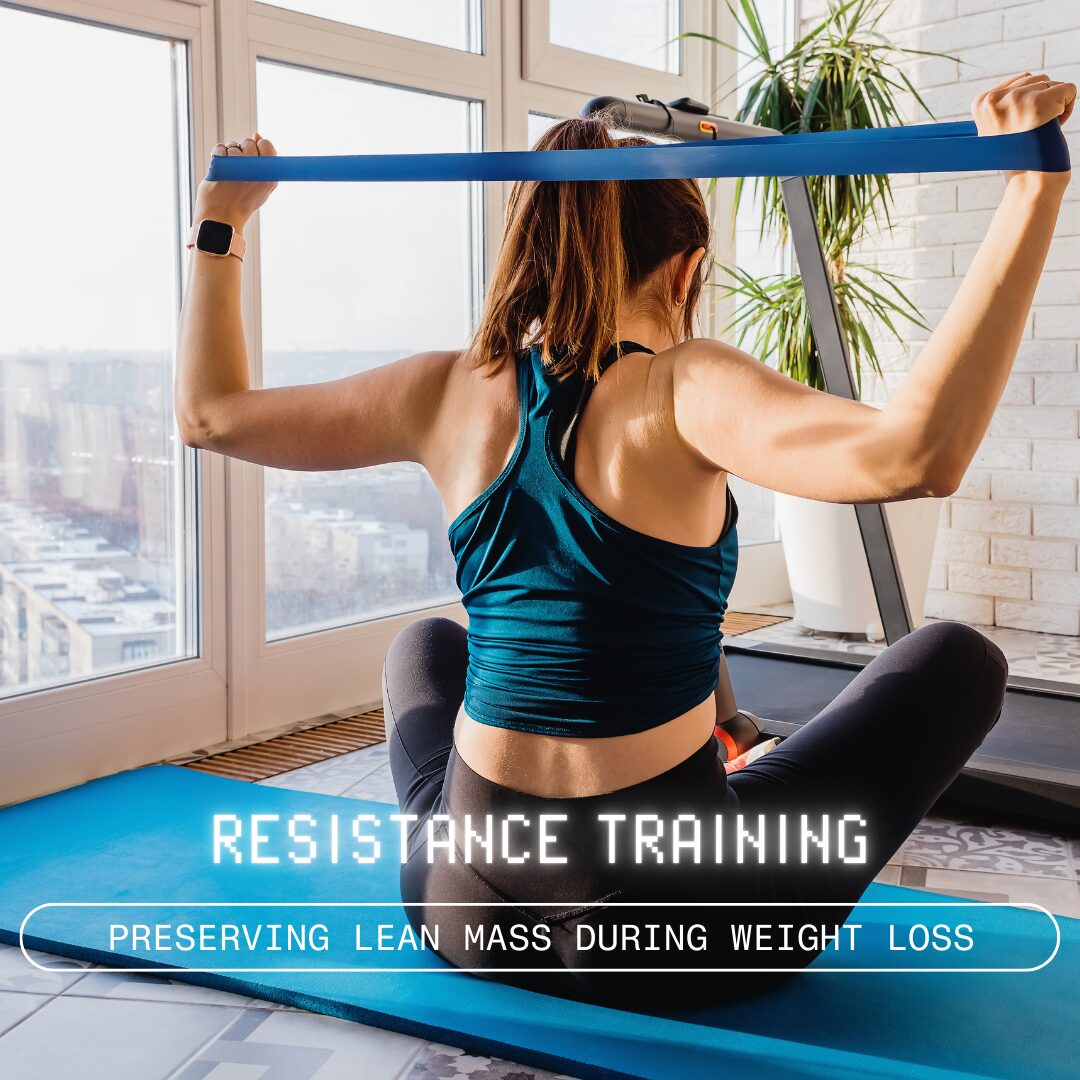Weight loss is commonly achieved through a caloric deficit, but without appropriate exercise intervention, a significant portion of the weight lost can come from lean mass (including skeletal muscle), not just fat. Preserving lean mass is crucial for maintaining resting metabolic rate, physical function, and long-term weight management. Resistance training (RT), in conjunction with adequate dietary intake, has been consistently shown to mitigate muscle loss during caloric restriction. This article examines the evidence supporting RT as a key strategy for preserving lean mass during weight loss.
Skeletal muscle accounts for approximately 30–40% of total body mass and plays a pivotal role in glucose metabolism, thermogenesis, and physical function. During energy restriction, the body adapts by breaking down not only fat but also muscle tissue to meet energy demands. The proportion of lean mass lost can range from 20% to 30% of total weight loss without exercise intervention (Weinheimer et al., 2010). This has implications for metabolic rate, strength, injury risk, and overall health outcomes.
While aerobic exercise is effective for increasing energy expenditure and improving cardiovascular fitness, it is not sufficient to maintain muscle mass in the context of energy deficit. A meta-analysis by Clark et al. (2005) found that individuals combining caloric restriction with resistance training experienced significantly greater lean mass retention compared to those doing aerobic training alone or dieting without exercise.
Similarly, a study by Willis et al. (2012) compared the effects of aerobic training, resistance training, and a combination of both over eight months in overweight adults. Only the groups incorporating RT preserved or gained lean mass, while aerobic training alone resulted in significant lean mass loss.
Resistance training stimulates muscle protein synthesis (MPS), counteracting the catabolic effects of energy restriction. The anabolic response to resistance exercise, even in a caloric deficit, contributes to muscle remodelling and growth when paired with adequate protein intake (Phillips & Van Loon, 2011). Additionally, RT improves neuromuscular coordination and muscular endurance, which can enhance daily energy expenditure and activity levels.
Protein intake is a critical factor in muscle preservation. Evidence supports a higher protein diet (1.6–2.4 g/kg/day) during weight loss to maximise lean mass retention, particularly in physically active individuals (Morton et al., 2018). When resistance training is combined with this elevated protein intake, the synergistic effect promotes muscle maintenance or even hypertrophy during periods of negative energy balance.
A 2016 study by Longland et al. explored this interaction by comparing two energy-restricted groups: both performed resistance training, but one consumed a high-protein diet (~2.4 g/kg/day) while the other followed a moderate-protein intake (~1.2 g/kg/day). The high-protein group lost more fat mass and gained lean mass, demonstrating the additive benefit of optimised nutrition with RT.
Preserving muscle during weight loss enhances more than just aesthetics—it supports metabolic health and functional capacity. Loss of lean mass, particularly in older adults, is associated with sarcopenia, reduced mobility, and increased fall risk. In athletes, muscle loss can impair performance, recovery, and competition outcomes.
A study by Pasiakos et al. (2013) reported that participants in an energy deficit who engaged in resistance training maintained strength and muscle quality more effectively than non-exercising participants, even when weight loss was similar between groups. For clinical populations, such as individuals with obesity or type 2 diabetes, maintaining muscle mass supports glycaemic control and reduces disease risk.
For individuals undergoing weight loss, incorporating resistance training at least 2–3 times per week is strongly recommended. Programmes should focus on compound movements targeting major muscle groups, with a progressive overload approach to continue stimulating adaptation. In addition to training, consuming adequate protein (distributed evenly across meals) enhances MPS and improves training outcomes.
In clinical or time-poor settings, even brief RT interventions (e.g., 20–30 minutes per session) have been shown to be effective when intensity is appropriate. Importantly, supervision or coaching may improve adherence and optimise technique, especially for beginners.
Resistance training plays a critical role in preserving lean mass during energy restriction, contributing to healthier weight loss outcomes. When combined with sufficient protein intake, it protects against muscle degradation, supports metabolic health, and enhances physical function. Given the extensive evidence base, RT should be a cornerstone of any weight loss intervention aiming to promote long-term health and sustainable outcomes.
References
Clark, J. E. (2005). Diet, exercise or diet with exercise: comparing the effectiveness of treatment options for weight-loss and changes in fitness for adults (18–65 years old) who are overfat, or obese; systematic review and meta-analysis. Journal of Diabetes & Metabolic Disorders, 4(1), 1-10. https://doi.org/10.1186/2251-6581-4-27
Longland, T. M., et al. (2016). Higher compared with lower dietary protein during an energy deficit combined with intense exercise promotes greater lean mass gain and fat mass loss: a randomized trial. The American Journal of Clinical Nutrition, 103(3), 738–746. https://doi.org/10.3945/ajcn.115.119339
Morton, R. W., et al. (2018). A systematic review, meta-analysis and meta-regression of the effect of protein supplementation on resistance training-induced gains in muscle mass and strength in healthy adults. British Journal of Sports Medicine, 52(6), 376–384. https://doi.org/10.1136/bjsports-2017-097608
Pasiakos, S. M., et al. (2013). Effects of high-protein diets on fat-free mass and muscle protein synthesis following weight loss: a randomized controlled trial. FASEB Journal, 27(9), 3837–3847. https://doi.org/10.1096/fj.13-230227
Phillips, S. M., & Van Loon, L. J. C. (2011). Dietary protein for athletes: from requirements to optimum adaptation. Journal of Sports Sciences, 29(sup1), S29–S38. https://doi.org/10.1080/02640414.2011.619204
Weinheimer, E. M., Sands, L. P., & Campbell, W. W. (2010). A systematic review of the separate and combined effects of energy restriction and exercise on fat-free mass in middle-aged and older adults: implications for sarcopenic obesity. Nutrition Reviews, 68(7), 375–388. https://doi.org/10.1111/j.1753-4887.2010.00298.x
Willis, L. H., et al. (2012). Effects of aerobic and/or resistance training on body mass and fat mass in overweight or obese adults. Journal of Applied Physiology, 113(12), 1831–1837. https://doi.org/10.1152/japplphysiol.01370.2011


